How Do You Get Daylilies To Bloom All Summer [Step by Step Guide]
by Lee Safin
Have you ever asked yourself why daylilies are named ‘daylilies’? Well, because each flower has a lifespan of only one day.
The million-dollar question remains, “how do you get daylilies to bloom all summer?”
To get daylilies to bloom all summer you need to either plant them in early fall or early spring. Or, plant them a minimum of 6 weeks before the summer season or earlier. By following five simple steps you can get the daylilies blooming all the summer.
Just because it lasts one day doesn’t mean more blooms are not possible to enjoy. You can when you know the suitable method.
Today we will share all the tricks of extending the blooming season of daylilies. Once you learned them, nobody can stop you from blooming your daylilies all summer long.
So, when next time someone asks you, “how do you get daylilies to bloom all summer?” you can answer them back. Without any further delay, let’s move on to know them.
Contents
- Why My Daylilies aren’t Blooming?
- How Do You Get Daylilies to Bloom All Summer?
- Re-blooming Daylilies: How to do it?
- Why Removing Seeds Extends the Blooming Season?
- Blooming Season Extension After Deadheading
- Cut Daylilies Properly: Which Technique Is Best?
- Daylily Bloom Problems
- Is Growing Daylilies Difficult in Summer?
- How to Deadhead Daylilies for Continuous Bloom
- How to Increase Daylilies Blooming?
- Daylily After Flowering: what to do?
- What is the Right Time to Prune Daylilies?
- How Many Years do daylilies Last?
- Why Do My Daylilies Fall Over?
- How often Should You Divide Daylilies?
- Wrapping Up
![How Do You Get Daylilies To Bloom All Summer [Step by Step Guide]](http://gardensynthesis.com/wp-content/uploads/2021/05/How-Do-You-Get-Daylilies-To-Bloom-All-Summer.png)
Why My Daylilies aren’t Blooming?
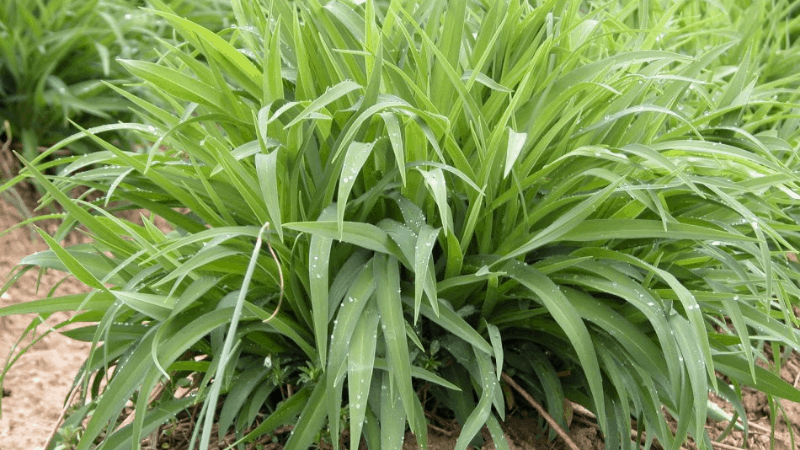
Many home gardeners may be concerned when they discover that their daylilies aren’t blooming. Adding plants to flower borders can enhance their visual appeal. The absence of daylily blooms can be quite displeasing.
Before growers can expect a plant to thrive, they must make sure they have provided the proper growing conditions. Daylilies that do not flower can signal a variety of problems. Here are some of them:
- Your plants mightn’t be getting enough sunshine in the surrounding area.
- Diseases of any kind (from pests or insects) may have affected them.
- Planting daylilies along with other strong plants too closely may prevent daylilies from collecting nutrition from the soil.
- Planting an excessive number of daylilies closely to each other may disallow them from spreading and growing correctly.
- It is possible that you thinned them out during the blooming period, delaying their blooming.
- Your garden’s ecological system may not favorable to daylilies to bloom.
- The flowering of certain varieties of daylilies is promoted by chilling. If you didn’t chill them appropriately, it might be the reason behind not blooming.
How Do You Get Daylilies to Bloom All Summer?
An initial question regarding the bloom of daylilies is, “how do you get daylilies to bloom all summer?”
If you want to start from scratch to bloom daylilies all summer, here we are mentioning all the steps sequentially.
Step 1 —Choosing the right planting area
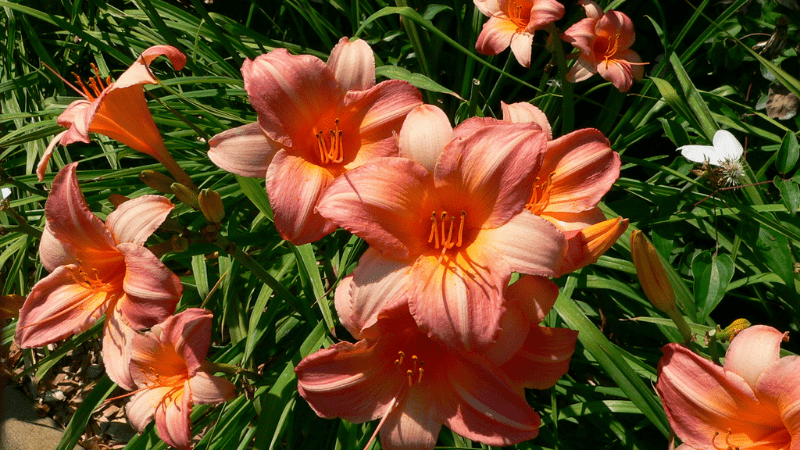
The question of “how do you get daylilies to bloom all summer” depends on where you planted your daylilies. Choosing the perfect planting site will ensure the best performance.
- A daylily needs a minimum of 6 hours of full sunshine every day to bloom. Choose a place where they will have sufficient sunlight in the morning while partial shade in the afternoon.
- Make sure the planting area has healthy and fertile soil so that they can grow fast.
- Though daylilies have a high tolerance level to get used with the soil type, they perform best when the soil is well-drained, slightly alkaline, and has 10-18% moisture levels.
Step 2 —Choosing the correct type of daylilies
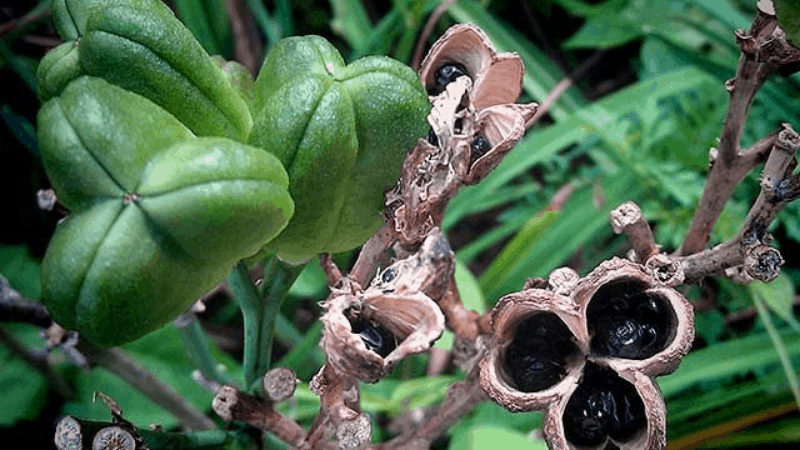
Not all daylilies bloom all summer long. Their summer blooming season lasts up to 3 weeks, and after that, they vanish.
Thankfully, many daylily flowers can bloom all summer long. They are:
- Happy Returns
- Apricot Sparkles
- Pardon Me
- Dynamite Returns
- Fairy Tale Pink
- Night Embers
- Stella De Oro (Best Option)
These flowers don’t bloom once. They mainly bloom intermittently or continuously from May through September.
When you plant these right type plants, they repeatedly bloom without giving any break between the flushes of bloom or just a short break. As a result, flowers bloom in the early summer and continue through the season and finally last till the beginning of fall.
Apart from the above seven daylilies, many different varieties of daylilies are available today. Their sizes, shapes, and colors vary. Proliferation is common among these flowers. On top of that, several flowers can grow on a single stem. Within one summer month, a large clump provides hundreds of blooms.
That’s why try to plant a wide variety of daylilies so that you can get flowers thorough out the whole summer season.
Step 3 —Choosing the right time for planting
As you want to enjoy the whole summer blooming season, you need to either plant them early fall or early spring. Or, plant them a minimum of 6 weeks before the summer season or earlier.
Step 4 —Planting the daylilies
So, you have already learned which type of daylilies is suitable for blooming throughout the summer. Also, you learned why your daylilies are not blooming appropriately and consistently and the best place and time to plant daylilies.
Now, it’s time to plant them appropriately. Make sure you prepare the soil properly so that it can grow steadily and bloom quickly.
- You can use compost or aged manure to help raise the organic matter in the soil before planting.
- Make a sufficiently large hole in order to accommodate the roots.
- Plants should be buried in about one inch of soil at the crown (where the leaves and roots meet).
- As you tamp the soil to eliminate air pockets, gradually add soil around the roots.
- Lightly pack down the soil around the plant when you have completed seeding it.
- Make sure to water the soil appropriately to make it decently saturated.
Step 5 —Maintenance during the season
Maintenance is a key task when you want to know “how do you get daylilies to bloom all summer?”
Watering
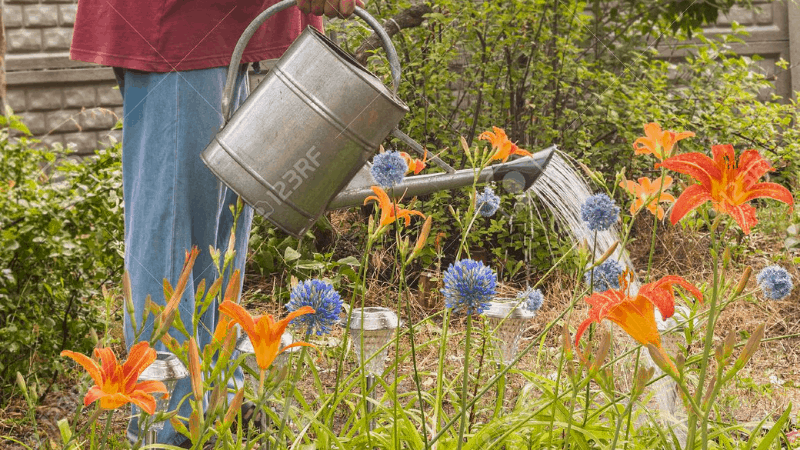
You should water new plants regularly during the first season to get them started. On the other hand, plants that are established only need to be watered in arid conditions.
Fertilizing
It is a good idea to fertilize extended-release fertilizer on the daylilies in late spring to boost the blooming period. You’ll be able to keep your plants blooming all season long if you do this.
Mulching
Why should you mulch daylilies? Daylilies benefit from mulching to prevent the emergence of weeds as well as to retain humidity and reduce soil erosion. Apply a light layer of mulch to the root zone. You should, however, avoid covering the crown.
Trimming and Pruning
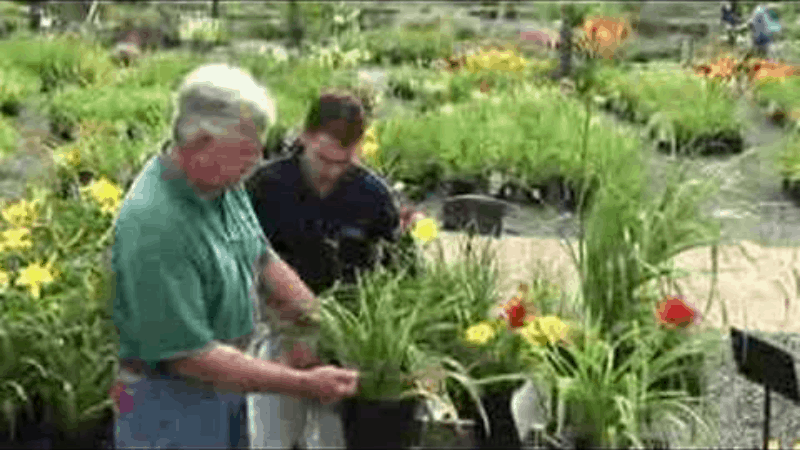
Whenever you see fattening seeds, immediately remove them. Seed production prevents new flowers from growing as the seed uses all the energy. Every scape must be cut down to the ground to ensure no new buds are evidently on it.
Yellowing leaves should be removed as early as possible during the season. New leaves will grow on the plant as a result. The spent leaves can be easily removed from many varieties by pulling on them.
Any spent blooms can be removed in addition to the ones with buds. It’s simply a matter of holding the bloom between your thumb and finger and delicately twisting it.
Re-blooming Daylilies: How to do it?
You can set your daylilies back to bloom by doing several things.
- When they become too crowded, divide, and replant them.
- Rebloomable daylilies are the best type to use for re-blooming daylilies. Stella de Oro, Advanced Party, Apricot Sparkles, Anzac, and Barbara Mitchell are some of them.
- Be sure to water your daylilies after replanting them to avoid drying them out.
- Ensure that they have sufficient sunlight every day.
- The top of your daylily should be mulched by 2 inches. By using it, the soil will not become dry. Plus, weeds won’t be able to take over.
- You need to get rid of old flowers and wilted buds whenever you see them. New growth is encouraged by this.
- You should use a specific type of fertilizer that releases nutrients slowly and steadily over time. Plus, make sure the fertilizer has a low amount of nitrogen. The plant should be watered immediately after fertilization with a 5-10-10 mixture. In this way, it has maximum effectiveness when absorbed by the soil.
- During the resting session of your daylilies, trim the plant straight down to the ground. Plus, leaves that have withered or died should be removed. It will help the daylilies re-bloom for the next season.
Why Removing Seeds Extends the Blooming Season?
The seeds of daylilies are helpful if you intend to grow more of them. In fact, we should leave some on the plant. However, if you’d like to improve blooming, be sure to get rid of them.
So, why should we do it? The plant cannot produce flowers if all its energy is spent forming seeds. In addition to preserving energy, Plants produce more flowers when seed pods are removed.
Make sure to snap off the flower with the seed pod at its base, as well as the spent daylily. After that, the stalk should be cut down once it has finished flowering. No flowers will bloom this year.
Blooming Season Extension After Deadheading
It is a widely known fact that the number of flowers increases when you do deadheading regularly. However, are you aware that it helps them bloom for longer?
Snap off spent flowers from the base each day to extend their blooming season. Your motivations for doing this are twofold:
- Plants look more attractive after deadheading.
- The plant will produce more flowers if you get rid of the dead flowers, so you can expect to see more stalks.
Cut Daylilies Properly: Which Technique Is Best?
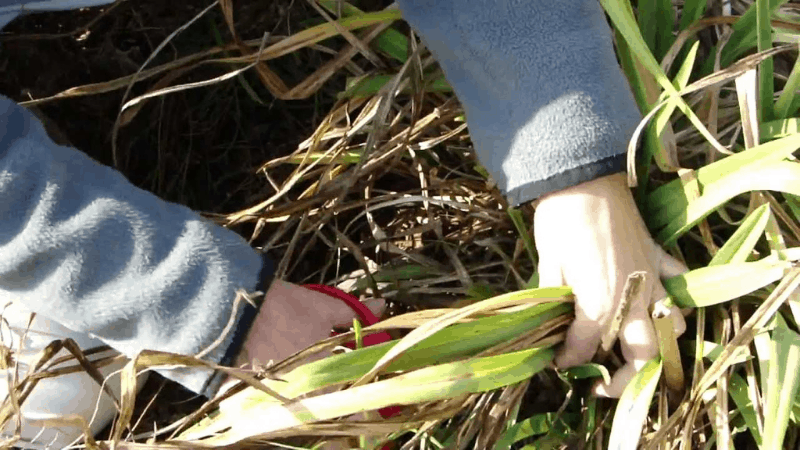
Getting rid of crowded daylilies may be an easy fix if they’ve stopped blooming. Root pruning for daylilies is recommended every couple of years. It will ensure their growth is unaffected. Here is a way to do it:
- A plant’s roots need to be divided and replanted when they get too full.
- For easier cultivation, you should trim the plant’s leaves to around six inches.
- The dirt surrounding the clumps needs to be loosened. Hence, it is possible to divide one huge plant into several smaller ones.
- After you pull the clumps out of their planting spots, use a rake to remove the extra dirt to expose them as single fans.
- Separate the clumps of soil by removing as much soil as you can.
- Prepare new planting sites by adding the clumps about 18 inches deep, and the width should exceed the roots.
- In the middle of the hole, place some dirt, and the crowns should be atop.
- Approximately 1 1/2 inches of dirt should be placed on them.
Daylily Bloom Problems
As reported by Oak Forest Technology Solutions, One of the most common reasons your daylilies won’t bloom well this year is they were not planted at the appropriate depth.
In this case, use a clean trowel to dig gently around the plant and confirm that daylily rhizomes are about one inch deep, just below the soil surface.
Mulching your daylilies often will make them grow deeper than they naturally do. The mulching technique may prevent daylilies from blooming if you plant them in excessive depth. Rhizomes can be dug up and replanted if needed.
Lack of sunlight is another problem with daylilies. As per the American Daylily Society, direct sunlight is essential for daylilies. They need a minimum of six of full sunlight every day.
Make sure you have ample sunlight each day for your daylilies. Identify a more sunny place for the rhizomes if necessary. Or, you can enhance sunlight exposure for your daylilies by pruning nearby trees and shrubs.
Is Growing Daylilies Difficult in Summer?
Growing daylily flowers is not a complicated task at all. They are easy to grow in a variety of soils and temperatures. This is why gardeners enjoy growing this plant.
Besides, the plant is usually pretty hardy and not prone to severe insect issues. These plants have a long lifespan. So they reappear naturally on their own each year.
Apart from that, they multiply while growing, and flowers of all colors fill the space quickly. Additionally, drought-tolerant flowers grow on these plants. So the occasional neglect of watering them is okay for them.
The best bloom is achieved by fertilizing daylilies prior to blooming. Though they can cope up with low-quality soil and fertilizer, they will not bloom in this condition.
As you want to grow more flowers continuously, it is essential to plant them on healthy soil and use high-quality soil.
How to Deadhead Daylilies for Continuous Bloom
You must remove both the spent blossom and the bud on a daylily plant to deadhead it. Blossom can be detached from its flower stem, or a flower stem can be separated from the scape by removing it from the ovary. Here we are mentioning the deadheading two methods:
Method 1 —Snapping or Pinching off
Fingers and thumbs are used to pinch the stem of the flower. Alternatively, in a quick motion, snap the flower stem downward.
The easiest way to cut off a considerable number of spent blossoms is to snap and pinch them. You are more likely to damage the scape if you are not proficient at these techniques. You may also displace nearby immature buds if you don’t have experience.
Method 2 —Cutting
Another easiest way to cut the flower stem is using a pair of small, sharp scissors. It takes more time to do this method, but it is less damaging to the remaining buds and scape.
How to Increase Daylilies Blooming?
The best method of promoting blooms on daylily plants if the proper conditions are met is to divide the plants. A humungous stand of daylilies needs to be divided and planted somewhere else in the garden. Daylily plants can be divided at any time of the growing season.
Daylily After Flowering: what to do?
Daylilies are easy to prune. You can take the help of pruning shears to cut off the scapes, the stalks on which the flowers bloom. Or, wait for the scape to come out easily with a tug on it. After the first frost, prune the leaves with sheers when the leaves brown in fall.
What is the Right Time to Prune Daylilies?
When you want to know this vital question, “how do you get daylilies to bloom all summer?” knowing the right time is essential to cut back daylilies.
Foliage on cultivars whose leaves turn brown should be pruned in late summer or early fall. If dead foliage is present, remove it and cut back the remaining leaves less than a foot from the ground.
How Many Years do daylilies Last?
Daylily roots and stems get crowded after three to six years, making it hard for daylilies to produce flowers.
It is possible to revitalize your plant by dividing roots and foliage that are covered with debris. Organize your garden into divisions or add plants to fill in gaps.
Why Do My Daylilies Fall Over?
There are many reasons for daylily scapes to lean or topple.
- Due to heavy summer storms
- Dogs or pets run through the plants
- Ripping the plant leaves
How often Should You Divide Daylilies?
Diving daylilies is a common thing to stimulate their growth. For the plants to continue to bloom, the division should occur every three to five years.
Wrapping Up
To bloom daylilies all summer, you need to choose the right type of daylilies, select a perfect planting site and more importantly, take care of them appropriately.
Hopefully, this article is helpful to answer all the related queries on “how do you get daylilies to bloom all summer?” Thanks for reading!
 |
 |
 |
 |

About Lee Safin
Lee Safin was born near Sacramento, California on a prune growing farm. His parents were immigrants from Russia who had fled the Bolshevik Revolution. They were determined to give their children a better life than they had known. Education was the key for Lee and his siblings, so they could make their own way in the world. Lee attended five universities, where he studied plant sciences and soil technologies. He also has many years of experience in the U.S. Department of Agriculture as a commercial fertilizer formulator.
Thoughts on "How Do You Get Daylilies To Bloom All Summer [Step by Step Guide]"
 |
 |
 |
 |
Get FREE Gardening Gifts now. Or latest free toolsets from our best collections.
Disable Ad block to get all the secrets. Once done, hit any button below
 |
 |
 |
 |